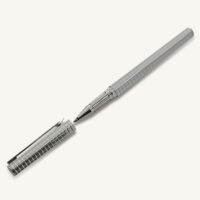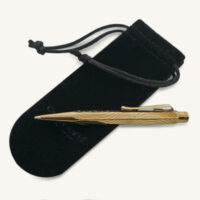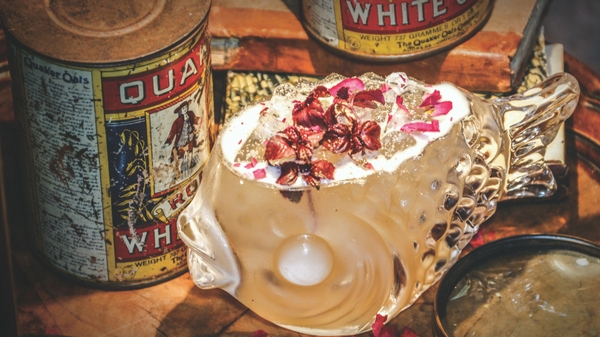
A basic requirement of a pub or bar used to be that you could find it. No more it seems. Now the trend among new watering holes is to make them as difficult to locate as possible – and then to make a challenge of getting through the door.
We live in the second age of the “speakeasy”, a category of bar which makes a point of concealing itself from public view – accessible only to those in the know. The first time around there was a good reason for this. The term tends to be associated with Prohibition in the United States during the 1920s and early 1930s – a period in which alcohol was banned – and that was the speakeasy’s heyday.
It is estimated that at one point there were around 10,000 of them in Chicago alone, with most offering bootleg liquor supplied by the legendary Al Capone. The 1929 St Valentine’s Day massacre was occasioned by a turf war over who got to sell speakeasies the hooch.
They had been around for some time before that, though. The word “speakeasy”, meaning an unlicensed drinking den, started appearing in American newspapers in the late 1880s, with the explanation that people spoke softly or “easily” about these illicit taverns to avoid tipping off authorities. A similar term, “speak softly shop”, is recorded earlier in the British Isles where it meant a smuggler’s retreat.
The speakeasies of the Prohibition era were not, for the most part, great places to drink cocktails. The “classic” recipes popularised by such 19th-century pioneers as New York bartender Jerry Thomas were elegantly simple and derived their appeal from spirits of decent quality.
Liquor, which was illegally distilled as well as illicitly sold, was altogether rougher stuff, and drinks were adapted to disguise the shortcomings of the base spirit.
“The sage of Baltimore”, satirist H.L. Mencken wrote memorably of “rye whiskey in which rats have drowned, bourbon contaminated with arsenic and ptomaines, gin that is three-fourths turpentine and rum rejected as too corrosive by West Indian embalmers”.
Little wonder that fruit juices, syrups and other sweeteners were required to make the stuff palatable. However, most “Prohibition-era cocktails” were not created in speakeasies, or even in the US for that matter. They were mixed by American bartenders who had moved to other countries to escape Prohibition at home. Havana was a popular refuge for gangsters and mixologists alike.
The role of the speakeasy in cocktail history is little more than a footnote, but the idea of those places is evocative of a colourful era, and recent years have seen the rise of retro bars which hark back to it.

Faux-speakeasies, some of them fiendishly difficult to find, are located in cities all over the world where alcohol can legally be served. Quite a few of these establishments – which bank on having a hip clientele of drinkers who can get through their concealed entrances – are highly ranked on various lists of the best bars in the world.
Among these, the industry standard is The World’s 50 Best Bars list, voted on annually by the “who’s who” in the beverage world. A separate Asia’s 50 Best Bars list was introduced last year recognising the importance of Asia’s hyperactive bar scene.
On the current global list at No 7, New York’s Employees Only is concealed behind a fortune teller’s storefront, while the city’s Nomad Bar, at No 8 on the list, is hidden behind the Nomad Hotel’s Elephant Bar.
Asia’s highest entries, Singapore’s 28 Hong Kong Street and Shanghai’s Speak Low at numbers 14 and 15, respectively, are also classic speakeasies, although the Singapore bar’s name gives away its location. It does, however, eschew signage and advertising.
Speak Low is altogether more discreet. The entrance is hidden behind a moveable bookcase in a (real) shop selling bar tools and paraphernalia. The sentry behind the shop counter can take some persuading to let you in, but even after you have cleared that hurdle you’re not quite in the inner circle.
Al together there are three bars in the building, but one on the top floor is hidden behind an “Employees Only” sign and requires an invitation to get through. Fortunately, the drinks, created by Japanese star bartender Shingo Gokan and his team, are good in all the outlets.
On the Asia’s 50 Best list, 10 of the bars, which include Speak Low and 28 Hong Kong Street, are classifiable as speakeasies. Two are in Hong Kong – Stockton, at No 8, and Dr Fern’s Gin Parlour, at No 48. Beijing’s Hidden House and Guangzhou’s Hope and Sesame don’t make the list, but they represent the speakeasy culture in those cities.
Stockton – currently serving an excellent list of drinks inspired by literary figures (who double as famous drinkers) including F. Scott Fitzgerald, Edgar Allen Poe and Ernest Hemingway – is up a flight of stairs at the end of a dusty, low-lit corridor in a commercial building off Wyndham Street. It was among the first of the city’s fashionable bars to make a point of being difficult to find.
By the time Dr Fern’s Gin Parlour opened in the basement of The Landmark earlier this year, tucked behind a door marked “Consulting Room”, the trend was already well established.

Dr Fern’s is a sister establishment to Foxglove, a bar on Ice House Street that’s concealed behind a faux “bespoke umbrella” emporium. Foxglove also recently went down the “speakeasy within a speakeasy” route with the opening of Frank’s Library, hidden behind a curtained entrance.
The pretence that these bars are “hidden” from the general public, however, has become thinner. Most have websites which publish their addresses, as well as marketing people who put the word out. Now it’s less a matter of “speak it soft” than “speak it loud”.
However, operations that take the trouble to implement speakeasy concepts properly are generally also serious about the drinks. There are doubtless more to come, and a fair number will still be worth seeking out.
Text: Robin Lynam




